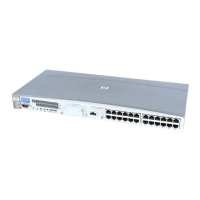Preparation
The easiest way to create a recovery archive of an HP-UX client is to use the Ignite-UX
GUI on the Ignite-UX server. All GUI commands can also be executed from the
command line. Refer to the Ignite-UX administration guide for more information.
Prerequisites
Before you are able to prepare your system for disaster, the Ignite-UX fileset has to
be installed on the client in order to enable the Ignite-UX server to communicate with
the client. Make sure that the revisions of the Ignite-UX fileset on the Ignite-UX server
and on the client are the same. The simplest way to keep everything consistent is to
install Ignite-UX from a depot build on the Ignite-UX server. This depot can be
constructed by running the following command on the Ignite-UX server:
pkg_rec_depot -f
This creates an Ignite-UX depot under
/var/opt/ignite/depots/recovery_cmds, which can be specified as a
source directory by swinstall on the client for the Ignite-UX software installation.
After you have installed Ignite-UX on the client node, you can use the GUI on the
Ignite-UX server to create recovery archives using make_net_recovery or
make_tape_recovery.
Creating an archive using make_tape_recovery
Perform the following steps to create an archive using make_tape_recovery:
1. Make sure that a backup device is connected to the HP-UX client.
2. Start the Ignite-UX GUI by executing the following command:
/opt/ignite/bin/ignite &
3. Right click the client icon and select Create Tape Recovery Archive.
4. Select a tape device, if more than one device is connected to the HP-UX client.
5. Select the volume groups you want to include into the archive.
Disaster recovery guide 121

